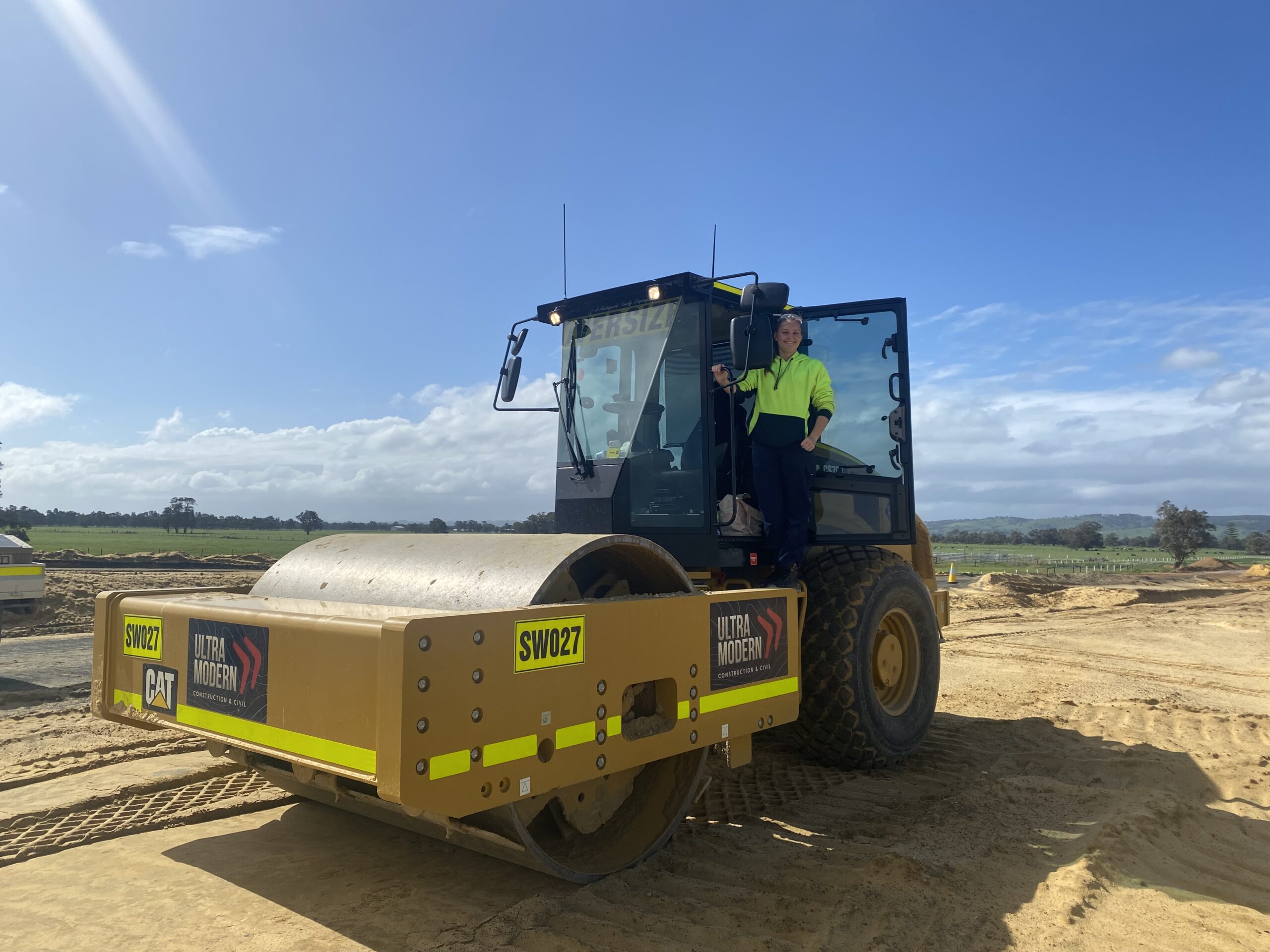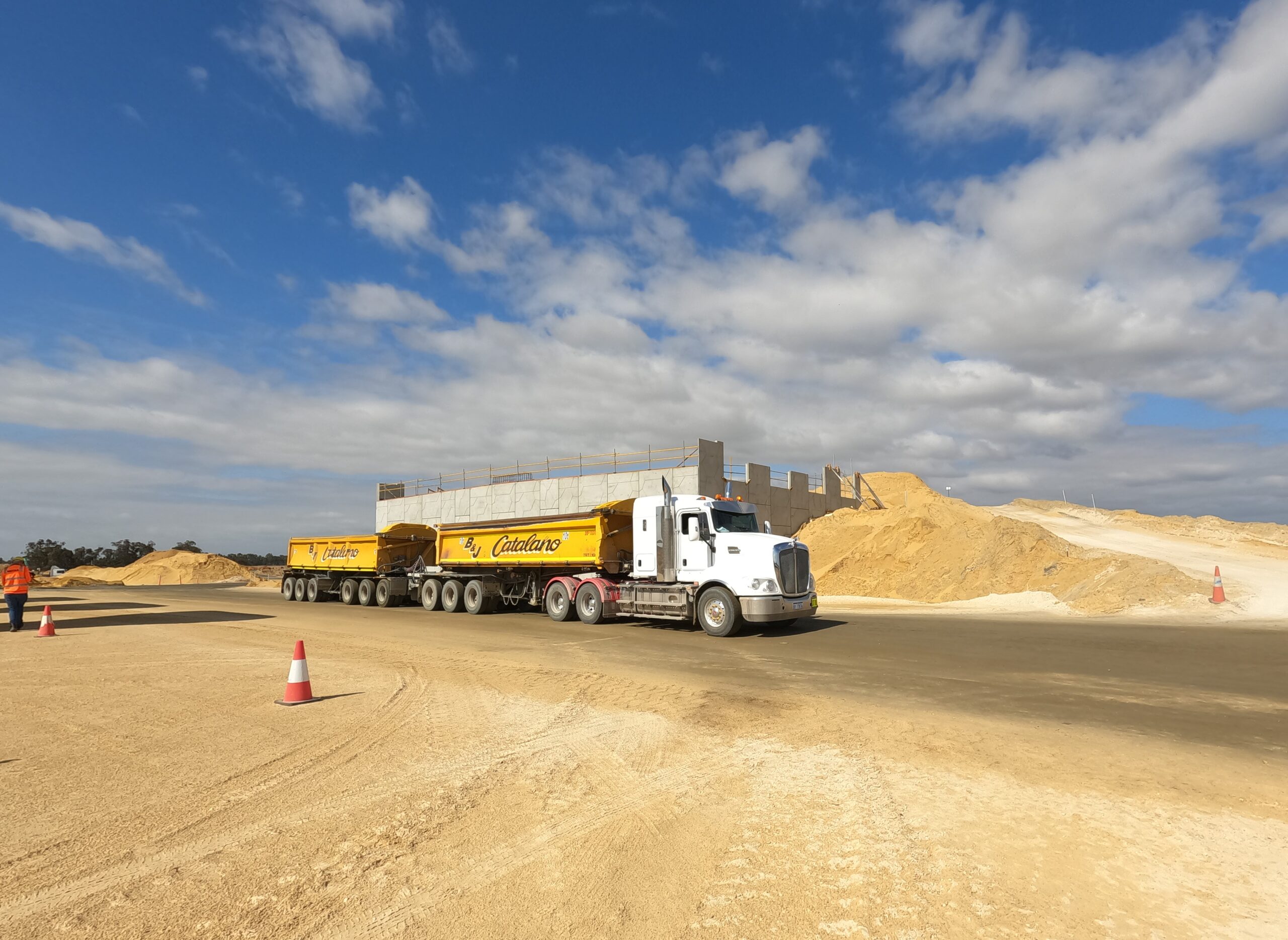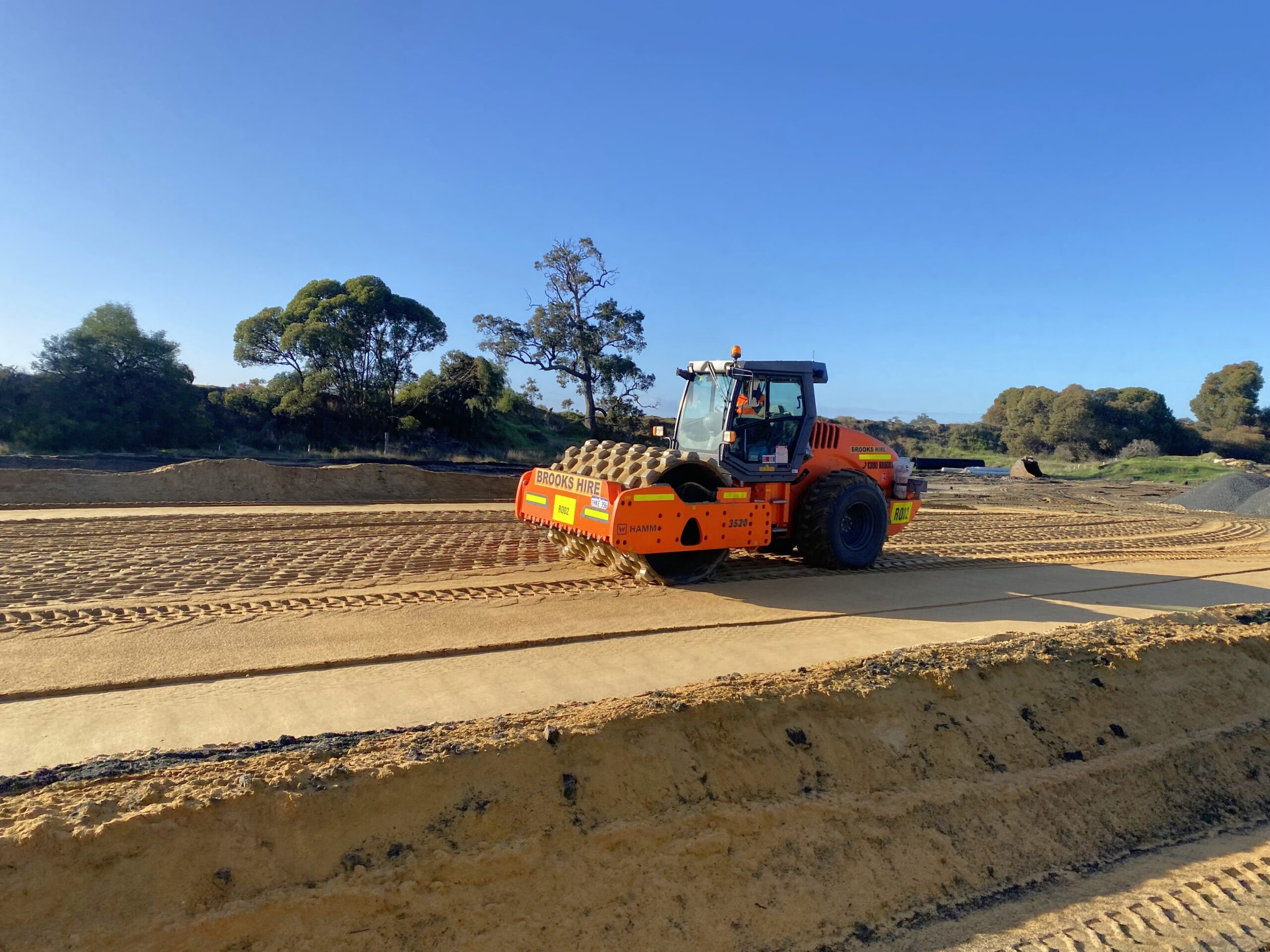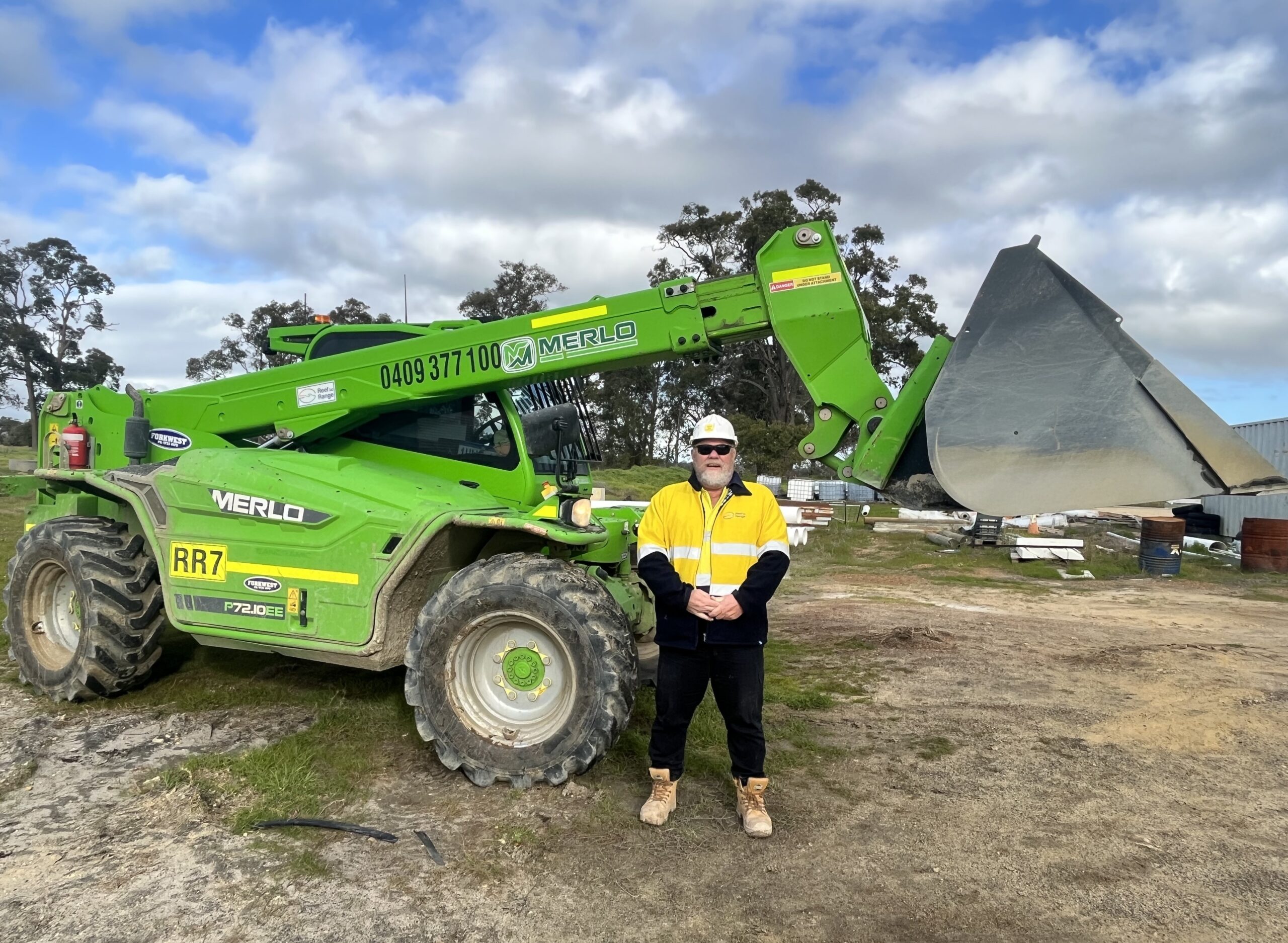Bunbury Outer Ring Road – Economic Outcomes
Describe what you have done and how you have done it
The Bunbury Outer Ring Road (BORR) is a $1.25 billion project creating a four-lane road linking Forrest Highway and Bussell Highway in the South West region of Western Australia (WA).
South West Gateway Alliance (SWGA) were awarded the contract in 2020, including the following social procurement targets.
- $450 million local businesses spend.
- $30 million Aboriginal businesses spend.
- 10% of the project’s construction workforce to be Aboriginal.
- 10% of the project’s construction workforce to be previously unemployed people.
SWGA identified various challenges in realising these ambitious targets, including:
- The lack of sufficiently large-scale capital works capacity in the South West region.
- Labour constraints and the lack of established Aboriginal businesses and Aboriginal workforce in the South West.
1) Local Business Advisory Group (LBAG): To address the identified risks and ensure the economic benefits and social outcomes were realised for the South West, SWGA established the BORR Local Business Advisory Group (LBAG). Made up of representatives from both the South West business community and civil contractors’ sector, the LBAG has proven effective in creating local solutions.
2) ‘Inside Out’ strategy: Under the WA Buy Local Policy, businesses owned and operated from outside the region but with a local office, could still claim the local preferencing (e.g. in Perth). SWGA, in collaboration with LBAG, established an ‘inside-out’ policy that prioritised genuine Bunbury-based businesses, and established the Local Weighting table. The table defined five different ‘categories’ of local, with the highest preferencing for businesses owned, operated and established in the region. This drove the procurement evaluation framework, providing tangible advantages to genuinely local businesses.
3) Local business expressions of interest: SWGA maintain a register of businesses who express interest in working on the BORR project. The register enables businesses to nominate their service offerings, which SWGA procurement can then utilise for tender invitations and minor procurement.
4) Local Content advisor embedded within the Alliance: Main Roads funded a local content advisor (LCA) to work in the SWGA. The LCA, seconded from the Department of Primary Industries and Regional Development (DPIRD), develops relationships with local and Aboriginal businesses, works collaboratively within SWGA, in procurement strategy and identify upcoming opportunities.
5) Collaborate with industry to develop scope of works:
- Business briefings: 9 package-specific business briefings seeking feedback on scope before packages are finalised. 48 businesses provided feedback on proposed packages which was used to finalise scope.
- Feedback: SWGA have met with 77 local and Aboriginal business to understand the reasons for declining tenders. The reasons are collated and reported on through the LBAG and SWGA board.
- Industry focus groups: These two sessions with local businesses were to provide direct and honest feedback to decision makers within the SWGA senior management team in an open forum.
6) Yaka Dandjoo - sustainable employment pathway: To maximise employment of both local Aboriginal and unemployed people, SWGA established the Yaka Dandjoo program as a training and employment pathway into civil construction. In collaboration with Federal and State Government agencies, SWGA facilitated the program along with a local Group Training Organisation (GTO).
What were the Outcomes and how were those outcomes shared?
1) Fit for purpose Procurement strategy aligned with local industry: SWGA have listened to the feedback from industry and made tangible changes in its procurement practice. In response to the local business briefings, the reasons for declining tenders, and the industry focus group sessions, SWGA made the following changes:
- Right sized packages: Earthworks and drainage packages on SWGA were significantly reduced in size to ensure the packages were accessible for local businesses. Local industry expressed an overwhelming agreement on preferred package size between $2-5 Million. SWGA adjusted its scope to suit, resulting in a significant increase in local participation in earthworks and drainage packages. The right sized packaging has been evident across other disciplines, including concrete works, landscaping and steel fabrication which have all been split into multiple smaller packages to align with the local market.
- Adjusted delivery model: The post-covid construction boom meant local businesses were stretched to meet the demands of their usual clients as well as tender for packages on the BORR project. Therefore, local industry expressed a preference for long-term plant hire contracts rather than contract work. SWGA responded by changing its delivery model and has now issued plant hire contracts to 20 individual businesses, of which 90% are local and 76% are small businesses (i.e. less than 10 employees).
2) Strong participation from locally owned and operated businesses: The impact of the BORR project has been widespread throughout the local business community. Some of the outcomes for the project’s commitment to local and Aboriginal businesses include:
- Procurement targets exceeding expectation: SWGA has already exceeded the committed local and Aboriginal spend targets through its current contract commitments. $517M of local business spend and $34M on Aboriginal businesses, exceeding both targets by $67M and $4M respectively. Given up to 40% of the project’s procurement remains, SWGA anticipate through its forecasted local spend to exceed both the Aboriginal and Local spend targets by a significant margin.
- Significant spend on category 1 local businesses: Given Bunbury’s close proximity to Perth, there was always an element of risk that a large portion of local spend would be achieved through Perth-based with regional offices in Bunbury. However, SWGA ‘inside out’ strategy and implementation of the local weighting table has led to 73% of the $517 of local spend on category 1 local businesses that are established, owned and operated in the South West.
- Competitive South West businesses: 83% of contracts have been won locally when a local business participates in the tender process. This outcome is significant given South West businesses make up, on average, 41% of the tender lists. This strong participation is a result of the commercial team’s buy-in to SWGA’s commitment, ensuring local businesses are given every opportunity to participate in tender processes and provided the necessary support.3) Yaka Dandjoo program success: SWGA’s Yaka Dandjoo program has enormous success since it was established in 2021. SWGA have completed the training for seven cohorts since the program’s inception, resulting in 140 individuals graduating from the program. Of the graduates, 57% are female and 60% Aboriginal.
4) Case study for future major infrastructure projects: Embedding an LCA into the Alliance has provided an opportunity to capture learnings that would typically stay with subcontractor on other projects. As the LCA is focusing on the broader state government objectives in addition to the BORR project, sharing data and case studies provides valuable insight for Main Roads and DPIRD. For example, SWGA capture the success rate of local businesses winning contracts when competing against metro-based businesses in open field tenders. This informs the local content goals and strategies of future projects in South West and other regions.
5) BORR community hub for the local community: Established as a shopfront in the center of Bunbury’s main street, community members including jobseekers and businesses can walk into the hub and speak directly to the SWGA employees about opportunities on the project. It includes 7m x 3m satellite map of the project, a visualization tool to picture how the project will look at completion, and is the meeting point for business briefings, project tours, and other events. The hub ensures all members of the community can feel informed and connected to the project.
Describe who benefited from your initiative, innovation, or approach?
1) Benefits to the community – Local businesses
305 local businesses and 38 Aboriginal businesses have benefitted from the project through direct spend from SWGA. Including:
- 108 local businesses and 21 Aboriginal businesses awarded contracts over $50,000; and
- 40 local businesses and 8 Aboriginal businesses awarded contracts over $1,000,000.
The project has been beneficial to businesses engaged on the project and the broader local business community. During planning phase, Main Roads engaged KPMG to assess the indirect impact the project would have on the community during construction. The estimates were significant. For example, KPMG estimated that for every $50 Million output on construction services, the project would generate 735 jobs; and for every $1 procured on local businesses, an additional $1.50 would be circulated back into the local economy. This led to the inside-out strategy, which has resulted in $377M on ‘category 1’ locally owned and operated businesses (i.e. 73% of the $517M). The indirect benefits generated from the construction phase to date would include over 5000 jobs and $565 Million of indirect spend in the local community.
Example: Doust Grader Services
For business owners such as Brett Doust, the BORR presented a unique opportunity for a long-term plant hire contract in his own town. Brett took the opportunity to purchase his own machine and start his own business, and he has now been contracted to the project for over 12 months. Doust Grader Services is one of eight owner-operators with long-term plant hire contracts who took the opportunity to work on the BORR project rather than continue the FIFO lifestyle usually required for sustained employment in the industry.
2) Benefits to the community – Local employment
The benefits to the local community through employment opportunities generated from the project has also been significant. The Yaka Dandjoo program alone has generated employment for 62 graduates, majority previously unemployed, with no previous experience in the civil industry. Given the tight labour market in the civil industry, where operators and labourers are at a premium, the Yaka Dandjoo program has been equally beneficial to the 25 businesses who have employed Yaka Dandjoo graduates in their workforce. 35% of the graduates who are now in apprenticeships or traineeships, and 21% have held steady employment for over 12 months since graduating.
SWGA’s aboriginal participation strategy has led to 97 Aboriginal people employed on the project; either directly with SWGA or employed via one of SWGA’s subcontractors.
What legacy and UN SDG contribution was achieved?
For many local businesses, engagement with SWGA for the BORR project has been a significant first step towards setting and achieving higher standards in business practices. One-on-one support and upskilling opportunities have ensured local businesses have developed their capacity to set stretch targets for themselves and capitalize on the opportunity to upgrade their administrative and procurement practices, purchase new and more efficient equipment, hire new staff, upskill existing staff, diversified services delivery scope and capability.
Example: Australind Water Boring & Civil (AWBC)
AWBC is a local business that has been working with the South West Gateway Alliance throughout the BORR project. They are a Bunbury-based business and have been engaged to complete bore drilling across the alignment.
“The BORR project coming to the South West region has helped broaden my business’ capability to respond to future activities. As a result of the ongoing work…we have been able to pick up an additional drill rig and have doubled our footprint in the last two years.” - Brad Hammersley, Managing Director AWBC
In addition, the upskilling of local employees has strengthened local employment capacity for contracted or in-house maintenance with Main Roads WA. This is particularly important given Main Roads WA policy direction to bring road maintenance in house. The BORR project has provided opportunities for hundreds of local labourers, operators, engineers and other skilled positions and exposed them to the highest standard of safety and construction practices.
Example: Local Aboriginal employee & Yaka Dandjoo graduate
“The team members in the Alliance have been pretty supportive because they know that my work was slowing down and that I needed to get a better job and stuff, so they helped me out with Maali... I like working on the Outer Ring Project because…it’s like a big opportunity to take on if you haven’t had the experience before.” – Lucas Bennell, Labourer, Maali Group.
Leveraging the experience gained by employers and employees on the BORR, Main Roads WA has a significantly increased pool of appropriately skilled and experienced construction businesses. suppliers and employees situated in the SW Region.
Example: Cast Civil
“Cast Civil has been focused on local engagement and local Indigenous engagement throughout the project that has enabled us to upskill local personnel here from the Bunbury and South West region. Whether that’s enabling them to get experience on construction projects or on the job training.” - Steven Curnow, Project Manager
Example: Maali Group:
Maali Group is an Aboriginal-owned and managed company providing electrical, mechanical and civil services. They have been sub-contracted on the BORR project to install drainage and culverts.
“As an Aboriginal Business, the support we have received from South West Gateway Alliance has been exceptional. We have been able to show our civil capabilities on this project and provide job opportunities for Indigenous people in the Southwest Region.” - Jason Callard, Operations Manager, Maali Group. Source: BORR 300922 Maali Group | Main Roads Western Australia.
The economic legacy of this project will be felt by those participating businesses and the wider South West community, but in other projects across the State and throughout Australia. Main Roads WA and Department of Primary Industries and Regional Development (DPIRD) will draw on the initiatives employed on the BORR project to further develop region-specific local content strategies. For example, embedding of an LCA into a large-scale project is now an accepted gold standard for effective local business engagement, and DPIRD will now look to communicate this by via the WA Buy Local Policy 2022.
[embed]https://vimeo.com/845810727/b7c8a991aa?share=copy[/embed]




